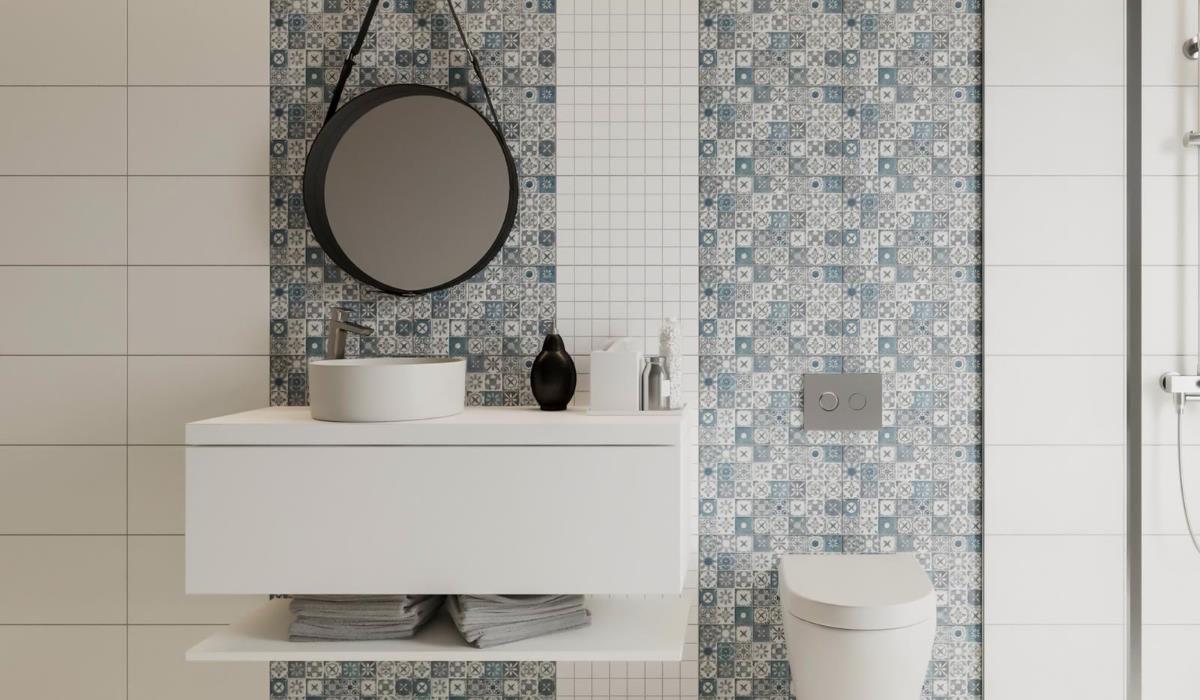There is no denying that wall tiles are one of the most popular and beloved bathroom finishing materials. Whether it’s bathrooms in homes, malls or corporate offices, nothing beats wall tiles. There is a wide variety of tiles available in the market in different colors, styles, finishes and sizes.
The most important feature of wall tiles is that they are very easy to install. It may surprise you, but you can even install tiles on the walls of the bathroom yourself. Here is a list of tips to help you do that.
Wall tiles in the bathroom – preparation and installation
First, you need to determine the number of tiles you will need to cover the wall. To do this, measure the dimensions of the wall so that you can buy the right amount of tiles. Make sure you add 10 to 15% extra tiles for cuts and losses. Prepare the wall to be free of dust, dirt and grime. It is worth noting that the tiles can be installed on both painted and unpainted walls. Use a ruler or tape measure to mark the center point of the wall. This will be the starting point. Spread the glue on the wall with a thin spatula, making upward movements.
Place the first plate at the bottom at the center point and continue towards the top. When the entire wall is covered, leaving room for corner tiles, measure the available space and cut the remaining tiles accordingly. It may be necessary to cut tiles of different sizes depending on the available space. After laying the tiles, gently apply the mortar between them with a spatula. After six to eight minutes, wipe the wall with a damp cloth.
Benefits and advantages of wall tiles in the bathroom

- Waterproof: Ceramic or porcelain tiles are resistant to moisture, making them a great choice for wet rooms such as the bathroom. They do not absorb water, which helps maintain their appearance and durability.
- Easy to clean: Tiles are smooth and easy to clean. They can be easily wiped with a damp cloth or use mild cleaning agents. It is important to maintain hygiene in the bathroom.
- Multiplicity of patterns and colors: Wall tiles are available in a variety of patterns, colors and textures. Thanks to this, you can adapt the bathroom decor to your taste and style.
- Resistance to damage: Ceramic tiles are durable and resistant to scratches and mechanical damage. This means that they will look aesthetically pleasing for many years, without visible signs of use.
- Protection against mold and fungus: Tiles are not a favorable environment for the development of mold and fungus. Combined with regular cleaning, they can help prevent these types of problems.
- Durability: Wall tiles are durable and resistant to time. They do not fade when exposed to light, which means that they will retain their original appearance for a long time.
- Emphasizing the space: Tiles can optically enlarge the room and give it a modern look. You can also experiment with the layout of the tiles to create interesting patterns.
- Availability of different sizes: The availability of tiles in different sizes allows them to be adapted to different areas in the bathroom, for example around the sink, shower or bathtub.
- Heat resistance: Ceramic or porcelain tiles are heat resistant, which is especially important in a bathroom where there may be sudden changes in temperature (e.g. hot water from the shower).



